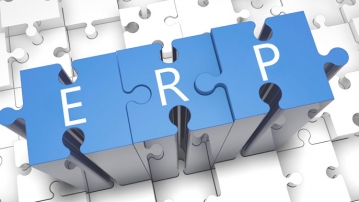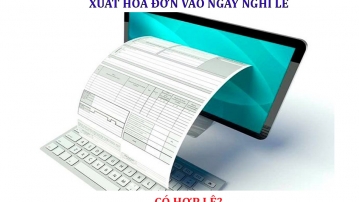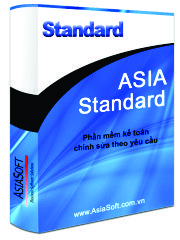 04 June, 2018
04 June, 2018
How to store accounting documents that every accountant needs to know
Set 1: VAT Declaration
Since January 1, 2015, the regulation that enterprises must make a list of purchase and sale invoices has been removed. However, to control the invoice, you should still make these 2 appendices.
At that time, the VAT declaration dossier includes:
– VAT declaration with the list;
– Input invoices, 3 output invoices are clamped after the declaration and arranged in order on the list of purchases and sales.
Set 2: Other tax returns:
Invoice issuance notice, invoice usage report, license tax declaration, financial statement, year-end tax finalization declaration
Because the number of declarations of this type is not much, so you will save in a pair of crab claws about 5cm thick for 1 year. In that briefcase, use paper dividers to divide them into categories.
Set 3: Banking documents:
The usual set of banking documents includes: Deposit records and loan documents
• For deposit records:
Depending on the number of vouchers, you will choose to close the book monthly or quarterly
The order of closing the rights is as follows: General statement (with bank stamp), arranged after the statement are debt notices, credits, transaction documents, UNC in the order of the statement.
• For loan application:
The loan contract, the appendices attached to the loan contract, the debt acceptance agreement and other attached documents are arranged in chronological order for each loan contract.
Currently, financial statements, loan plans… are mostly PROCESSING data, so with these documents, you should separate your internal files or use marking methods to avoid confusion when submitting to tax authorities.
Set 4: Receipt and payment voucher
Usually, receipts and payments will be bound in monthly volumes in the order of receipts and payments:
Specifically, how to save for 1 month is as follows:
Monthly cash book -> Receipt + expenditure slip with photo invoices, salary payment table after receipt and other documents (if any)
Set 5: Receipt of import and export
Paid monthly according to the order of warehouse receipts:
Specifically:
Receipt:
+ For external purchase: Need to attach the VAT invoice (photo) – purchase invoice, shipping invoice (if any), delivery record of NCC, quality inspection note, CO, CQ certificate (if any) have)
+ For inventory of finished products: It is necessary to save the attached warehouse cost calculation sheet.
Ex-warehousing slip: Attached is the output VAT invoice (photo), delivery note….
Set 6: Buy in and sell out contract
You need to save the purchase and sale contracts, quotes, contract liquidation and attached appendices separately for each supplier and customer. Normally the contract will be saved to the pair of crab claws.
Set 7: Accounting Book
At the end of each period, the accounting books in the software will be printed and bound. Before closing, you need to compare with the original documents to see if they are correct, sufficient or not.
Set 8: Profile of fixed assets
Set of fixed asset documents, you need a fixed asset card, VAT invoice (photocopy), fixed asset purchase and sale contract, fixed asset purchase decision, handover acceptance record fixed assets….and other records according to the characteristics of assets and type of business.
Set 9: Personnel records, insurance:
– Profile of each employee;
– Labor contract, liquidation of labor contract (if any)
– Notice of insurance and forms of declaration of increase and decrease of insurance, registration of salary scale
– Registration sheet for personal tax code for employees lao
– Changes in personnel for each month
…..
Set of 10: Other Documents
Other dossiers such as: State budget payment slip, import and export dossiers, debt reconciliation minutes, minutes of recovery, invoice adjustment, registration forms with the agency such as 06.08, official quotations …..you save each type in a pair of crab claws about 3-7cm depending on the amount generated is more or less.
Above are 10 common dossier sets and scientific arrangement.
Hope this article will help you somewhat in your accounting work.
Source: Accounting family


















